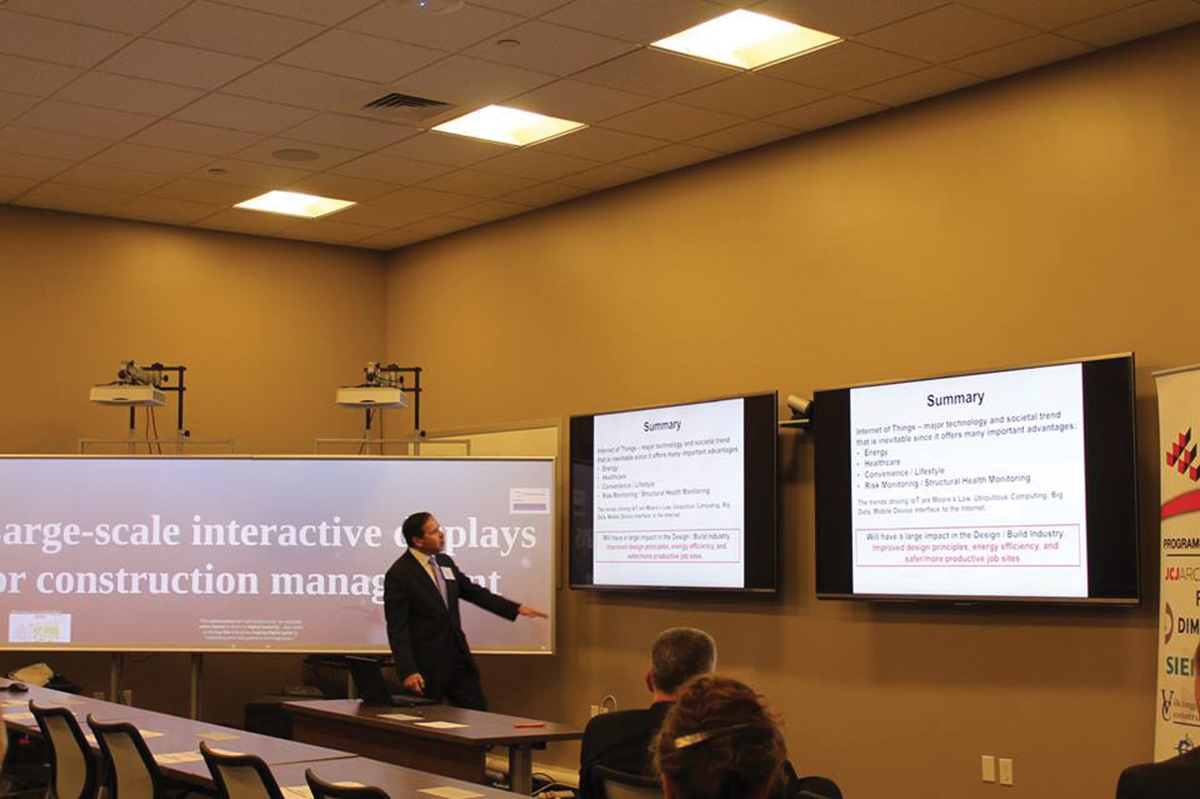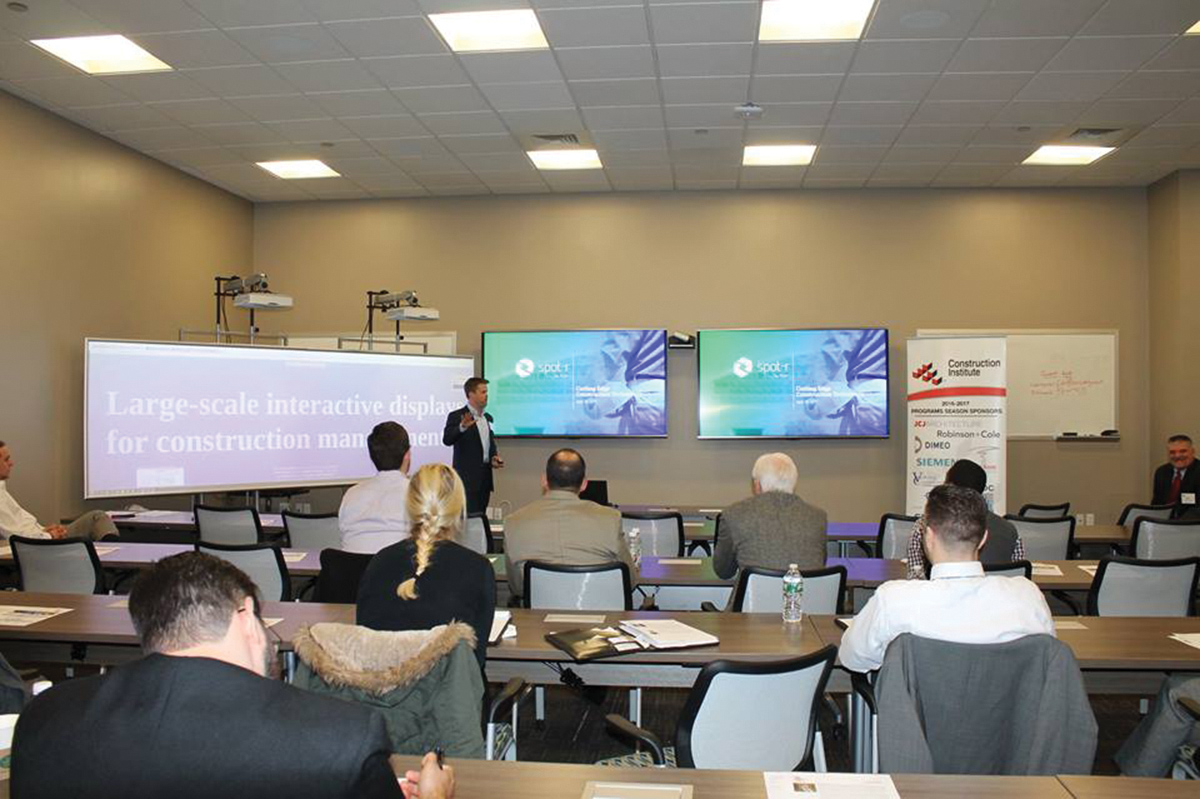The following article was adapted from the keynote address of Lou Manzione, dean of the College of Engineering, Technology and Architecture – University of Hartford at Cutting Edge Construction Technology, an April 20 program of the Construction institute.
“The Internet of Things” will have a large impact in the design/build industry through improved design principles, energy efficiency, and safer/more productive job sites.”


The rate of societal change is unprecedented. The Internet is one of the most profound technological and social phenomena of the past century. It rivals the Guttenberg Press as the technological advance that most impacted the knowledge and shared intelligence of the planet.
The Internet of Things is the next stage of the Internet. In simple terms, the Internet of Things involves autonomous communication between devices. These devices interact with each other and stream data into “the cloud.” Their communication is largely autonomous – there may be little or no interaction with the people they are supporting. We currently have billions of devices that are all connected to the Internet (mostly wirelessly). It’s estimated that Bluetooth devices, of which there were 4 billion in 2016 will explode to 20 billion by 2020. The rapid growth in the Internet of Things is made possible by advances in micro and nanotechnologies as well as the low cost of information storage. It is being driven by the tremendous potential value it can bring.
Currently, there are four major applications of the Internet of Things, 1. Energy management 2. Health monitoring/diagnostics/care 3. Convenience/improved lifestyle/simplification 4. Risk monitoring/ productivity/structural monitoring.
Tremendous energy savings can be achieved through smart systems that monitor building parameters, and heat and cool buildings only when required and to the levels that are optimal for the specific needs. Sensors that monitor the structural health of buildings, bridges, and other structures are invaluable. The industry has developed fiber optic sensors that allow battery free sensing of conditions over decades. There are currently fiber optic sensors for moisture, cracks, and stress levels that are being embedded in concrete. Biosensors, forces sensors, and tilt sensors have led to the development of new approaches to monitoring and protecting worker safety in real time. While the IoT has tremendous potential, it is important to point out that potential comes with some risks that require thoughtful analysis and response. The two principal issues raised in this context are cybersecurity and the potential effect on jobs. Both are societal issues that must be considered as we move forward.
The growth of the Internet of Things is a major technology and societal trend that is inevitable since it offers many important advantages. The major value for the design/build industry will be in improved design principles, energy efficiency, long-term monitoring of building health, and safer and more productive job sites.








